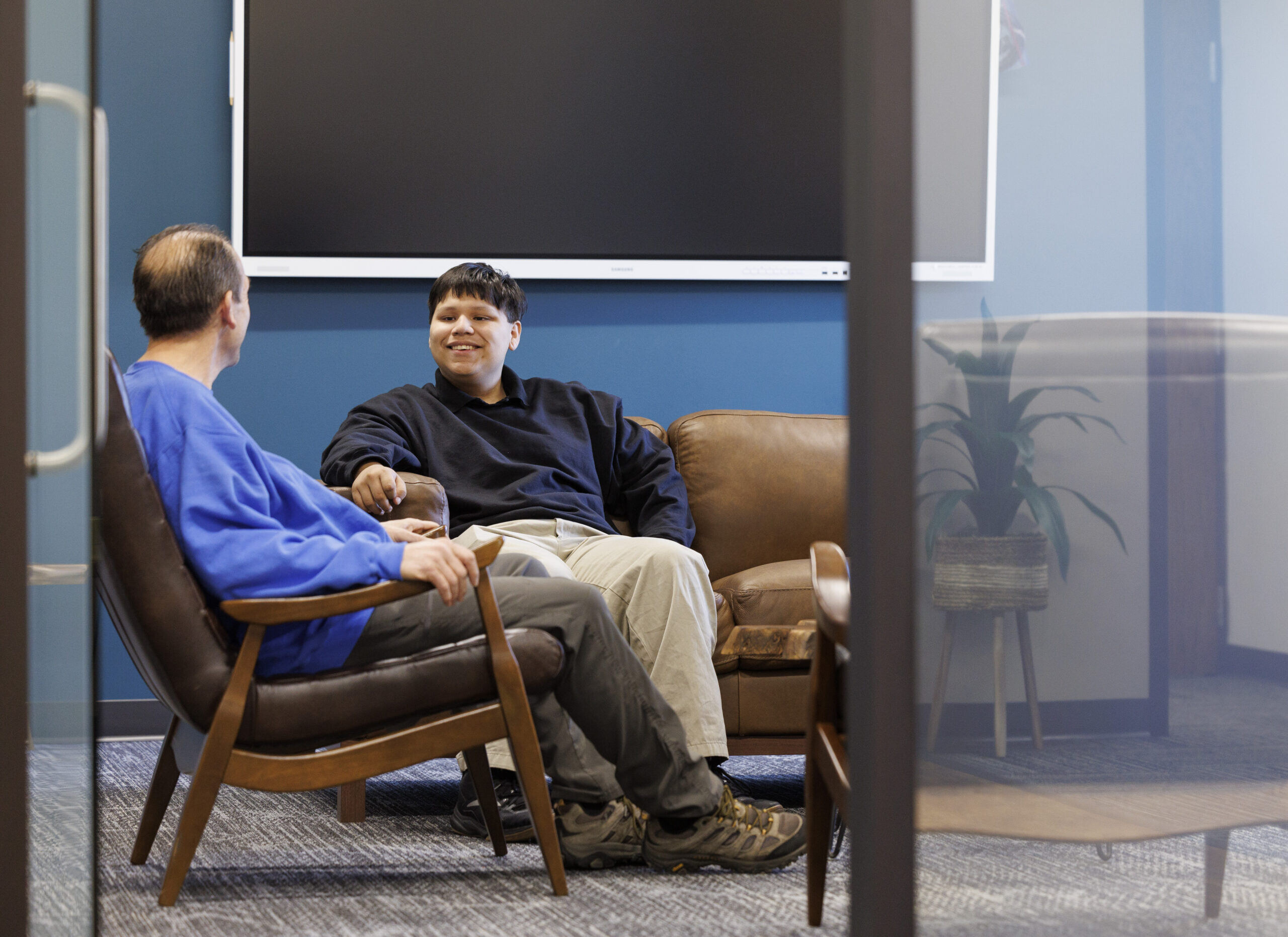![Body Image Issues: The Teen Male Edition [INFOGRAPHIC]](https://rawhide.org/hubfs/Imported_Blog_Media/Male-Body-Image-Featured-Image_03-1.jpg)
Females have been fed a steady diet of perfect body images in the media for years. Unrealistic female physiques have been splashed across billboards and fashion magazine covers for decades. Even dolls sported impossible proportions that caused young women to loathe their own appearance and develop eating disorders. Teen males have not been linked to this issue…until now.
The number of teen males dissatisfied with their bodies has tripled over the last 25 years and many even have distorted perceptions of their appearance—a condition known as body dysmorphic disorder. Body Dysmorphic Disorder (BDD) is a mental illness where an individual focuses obsessively on self-perceived physical flaws.
(Click to enlarge graphic)

Share this Image On Your Site
Body Image Issues: The Teen Male Edition
While women have been the focus of the perfect body type for years, the recent shift in media placing focus on the male body type is creating very similar problems. Unattainable physique has created unrealistic expectations, anxiety, mental health issues, and eating disorders for women, but now, it’s the male’s turn.
The rate of males dissatisfied with their bodies has tripled over the last 25 years. This has created sky high rates of body dysmorphic disorder, or BDD, a mental illness that causes an individual to place obsessive focus on what they perceive to be appearance flaws.
This obsession can lead to steroid abuse and eating disorders.
- Some male teens say they’d trade years of their lives for the perfect male physique.
- BDD can cause males to turn to steroids or develop eating disorders in an attempt to gain the perfect body.
- Male teens extremely concerned about weight are more depressed and more likely to binge drink or use drugs.
- Male body issues often go unnoticed because males are often thought to be secure with their bodies. More often, this is not the case.
Teen Males Increasingly Unhappy with Looks
45% of the teen male population is unhappy with their image compared to 15% in the early 1990s. Dissatisfaction centers on overall appearance:
- 50% of teen boys said they’ve complained about their appearance over the last month
- 29% of teen boys think about their appearance at least 5 times a day
- 18% of teen boys say they are highly concerned about their weight and physique
Body Image Issues by Gender
Both teen males and girls experience angst over their appearance, yet the disorder manifests differently by gender. So does the area of concern.
Teenage girls tend to internalize negative messages and obsess about weight loss to obtain a thin appearance. While girls are more open than guys about dieting, if their weight loss method includes an eating disorder, they go to great lengths to hide it. And no matter how thin they get, they see an overweight person in the mirror.
Teenage boys strive for a muscular physique. They may engage in extreme exercise, especially weight training many hours per day. Teen boys rarely admit they are unhappy with their physiques and will still hold distorted images of themselves even if they look fine to others. Indiana University of Pennsylvania found 1 in 5 teen males considered by their peers to be “in shape” still admitted being uncomfortable taking their shirts off in front of others.
The Teen Male Muscular Ideal
Teenage boy’s body image issues predominately lie in three areas.
- 50% of teen boys are worried about gaining muscle
- 33% of teen boys are worried about thinness and muscularity simultaneously
- 15% of teen boys are concerned only with thinness
90% of teen boys who exercise do so with the sole goal of adding mass and building muscle.
Dr. Alison Field summarized the current focus of the male physique: “There are some males who do want to be thinner and are focused on thinness, but many more are focused on wanting bigger, or at least more toned and defined, muscles.”
Muscle Dysmorphia Growing Among Male Teens
Muscle dysmorphia is a pathological obsession with muscle building and extreme focus on food choices. It is also called “bigorexia” or “reverse anorexia.” This condition leads to a fixation on gaining body mass.
- 25% of teen males at a normal weight believe they’re underweight
Teen males suffering from muscle dysmorphia put their lives on hold to exclusively develop their “perfect body.” This leads to countless hours in the gym, spending large amounts of money on supplements, and unusual eating patterns.
Teens Go to Extremes to Achieve Ideal Body
Teen boys who feel unable to achieve an already unattainable physique may use extreme measures such as steroids or supplements.
Over 50% of males with muscle dysmorphia abuse steroids. Steroids and supplements are attractive to teen boys when they fail to build an unobtainable physique.
- 10.5% of male high school students acknowledged using muscle-enhancing substances
- 6% of male high school students have taken steroids without a doctor’s prescription
Injectable steroids are a dangerous way to enhance muscle, along with “natural” protein powders and supplements as well. Many protein powders and supplements are unregulated by the Food and Drug Administration (FDA). They may contain unhealthy ingredients and may cause unappealing side effects.
Many Would Make the Ultimate Trade-Off
Some teen males would make a huge sacrifice for a perfect body.
- 38% would sacrifice at least a year of their life for a perfect body
- 5.3% would sacrifice a decade of their life, or more, for a perfect body
The lengths at which males are willing to go to reach their “ideal” surprised Dr. Alison Field:
“You want people to be concerned enough about their weight to make healthy decisions, but not so concerned that they’re willing to take whatever means it takes, healthy or unhealthy, to achieve their desired physique.”
Eating Disorders on the Rise with Male Teens
Adding muscle bulk is not the only body issue concerning young males. Male eating disorders are rising as they grow more obsessed about having a lean body.
31% of male teens reported binge eating, purging, or overeating. Additionally:
- 17% of teen males are on extreme diets
- 4% of high school males went without food for more than 24 hours straight in the past month
- 2% of teen males intentionally vomited or took laxatives to lose weight or prevent weight gain
Eating disorders can turn fatal. Anorexia nervosa has the highest mortality rate of all mental health disorders at 20%. Bulimia can lead to suicide.
Unfortunately, only 10% of individuals with an eating disorder receive treatment. Eating disorders come with a strong feeling of shame, often preventing open conversations. Two commonly believed fallacies prevent men from seeking help for eating disorders:
- Males are more secure with their bodies, no matter their size
- Eating disorders are a “woman’s disease”
Top Causes of Teen Male Body Image Issues
1. SOCIAL MEDIA
A joint study by Today & AOL found:
- 1 in 3 teen males say social media makes them feel more self-conscious about their appearance.
People typically display only the highlights of their lives and their best photos on social media, creating a sense of the perfect appearance and life. This pattern can cause others to feel inferior about their own appearance and life.
2. PEER PRESSURE
The pressure to fit in as a teenager also causes male body image issues. Teen males reach physical maturation at different rates. Seeing friends or classmates increase strength and muscle mass can cause insecurities or self-consciousness for those who haven’t reached physical maturation. Additionally:
- 58.6% of teen males said talking about their bodies makes them feel self-conscious
- 25% of boys reported being teased about their weight
3. ACTION FIGURE TOYS
Simple toys like action figures create insecurities in certain teen males as well. These dolls feature chiseled abdominal muscles and nearly impossible pectoral muscles. Only 1 to 2% of the male population is capable of developing the body type of today’s action figures.
4. MOVIES AND MAGAZINES
Movies and magazines have also begun displaying more bare-chested men, six-pack abs, and chiseled physiques. The movie 300 may come to mind, or even the scene in Captain America where Steve Rodgers, a scrawny, thin male character, enters experimental treatment and leaves as a buff hero. This gives teens the impression that the only true heroes are the people bigger and stronger than everyone else.
Dr. Raymond Lemberg summed up the media’s added focus on strength and the male body:
“The media has become more of an equal opportunity discriminator. Men’s bodies are not good enough anymore either.”
Body Image Is Closely Linked to Self-Esteem
Negative body image often brings low self-esteem, but other issues also appear. Negative body image may cause:
- Substance Abuse
- Depression
- Almost 50% of people with eating disorders meet the clinical criteria for depression.
- Changing adolescent bodies and overwhelming hormones may create depression and body image issues. They exhibit a heightened attention to detail and critical appraisal of the body.
- Anxiety
- Eating Disorders
- Teen males with body image issues may develop eating disorders like anorexia or bulimia as a coping method.
- Excessive Weight Lifting and Injury
- Insecurities about body image may cause males to weight lift excessively, and incorrectly, risking injury.
- Suicidal Thoughts
- Body image issues have contributed to the tripling of the rate of teen suicide since 1960. Those who thought they were overweight had more suicidal thoughts than those who didn’t.
Warning Signs
Males seek treatment less often for eating disorders because of the perception that they’re suffering from a “woman’s disease.” However, it doesn’t mean they don’t experience body image issues, anxiety, and stress about their appearance.
Dr. Alison Field said: “Pediatricians and adolescent medicine doctors and parents need to become aware that they should be listening as much to their sons’ conversations about weight as their daughters.”
Teen males may display these warning signs:
- Chronically Comparing – Individuals struggling with poor body image often compare their body with others. They may compare to people they know, strangers, celebrities, or models. Comparing often involves specific body parts or certain characteristics and leads to even greater dissatisfaction.
- Unable to Receive Compliments or Praise – Teens with body image issues may quickly deflect compliments or have strong suspicion of one’s motives when complimented.
- Hypersensitive Interactions with Others – Low self-esteem may cause constant questioning of how others act and what others say. Many motives, behaviors, gestures, or words can be misconstrued as negative.
- Inability to Enjoy the Present – Focus on anything else if the mind is solely focused on body image is difficult. Living in the moment also becomes difficult, and persistent fears of perceived flaws invade the brain.
- Compartmentalizing Body into Parts – Rather than feeling wholly connected, focus falls on specific body parts, leading male teens to spend hours building one specific body area.
- Unnatural Associations – Eating food may be linked with feelings of guilt, shame, or blame.
How Parents Can Help
If you are worried your teen might suffer from body image issues and insecurities, consider these approaches:
- Be a Good Role Model: Watch how you speak about your own appearance. If you are outwardly critical of your own body, your teen will apply that negative view to his or her body.
- Educate on Media Manipulation: Teach your teen that the media constantly portrays unrealistic images of men and women. They are Photo-shopped to create perfect skin and physiques, implying that only this perfect standard is acceptable. It’s not real.
- Nurture Personality and Interests: Help your teen shift their focus from perceived physical flaws to their interests or talents. If they like art, find them an art class. Or tennis lessons if they show an interest. This will nurture their inner qualities and build self-esteem.
- Compliment Deeper Qualities: Praise a kind heart, giving nature, sharp brain, etc.
- Listen Without Judging: Listen to how they feel without trying to argue them out of feeling that way. Praise their inner qualities.
- Provide Healthy Role Models: Look for role models in child’s interest areas such as art, music, or sports.
- Get Outside Help: If you notice irrational beliefs in your teen, seek the help of a trained medical professional.
While we’re all familiar with the body image pressures the media places on girls, males experience body image issues as well. Media portrayals of the ideal body, peer pressure, and an obsession with size and bulk create body image issues. Teen males will try extreme methods to obtain an ideal physique. Recognizing a teen might be experiencing body image issues can prevent future issues and help them grow and become more comfortable and confident with the own unique and incredible person they are.








![Body Image Issues: The Teen Male Edition [INFOGRAPHIC]](https://rawhide.org/hubfs/raw_assets/public/Rawhide_January_2025/images/FF-color-blade2.jpg)
